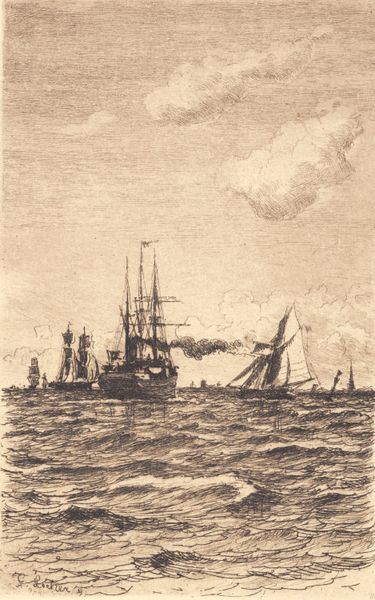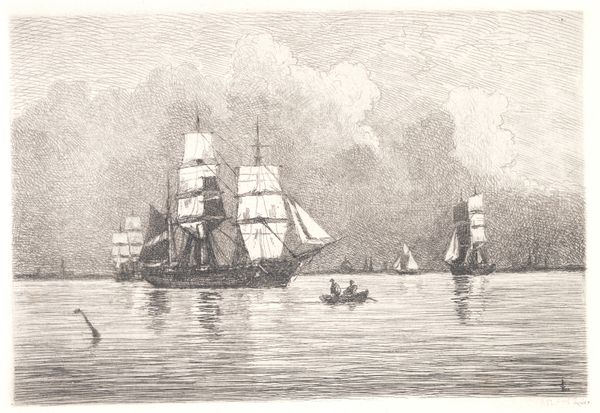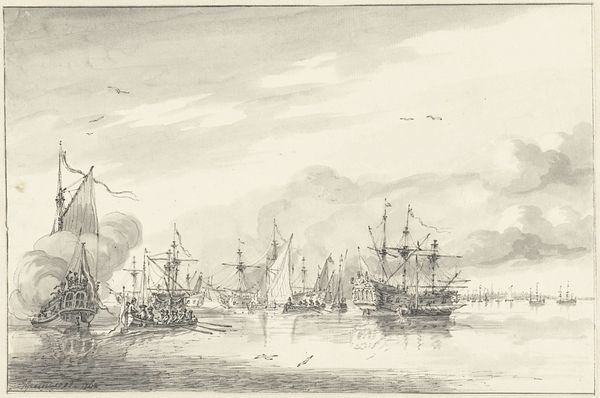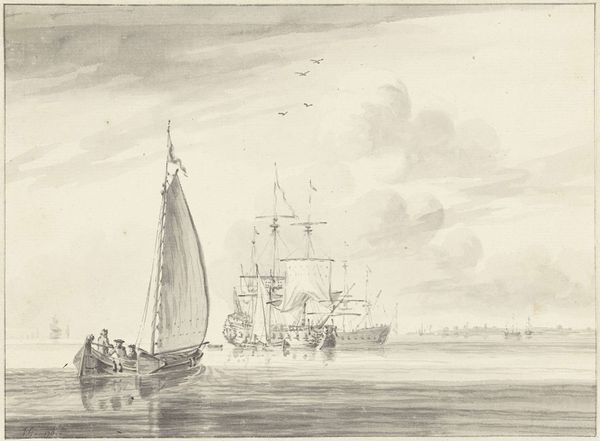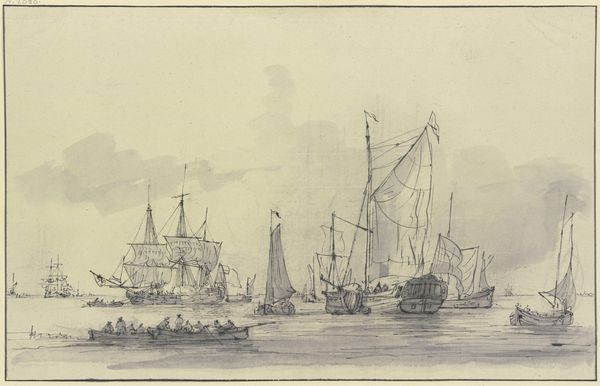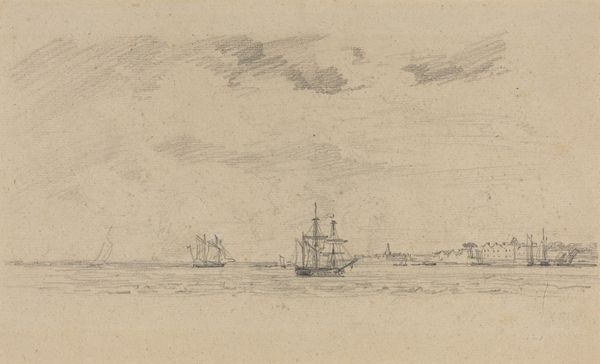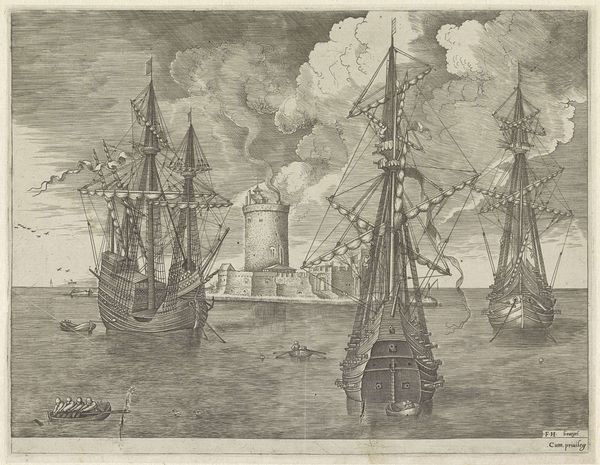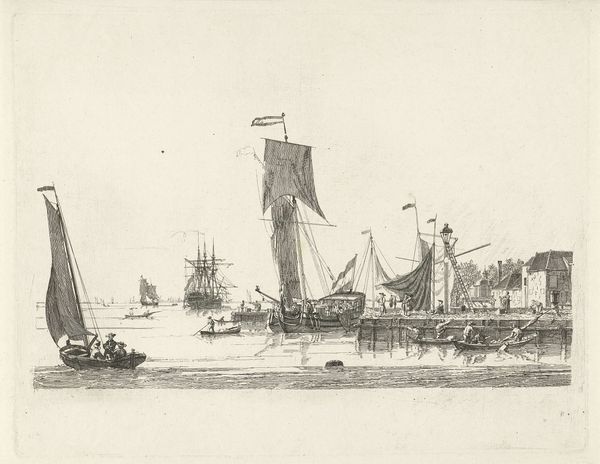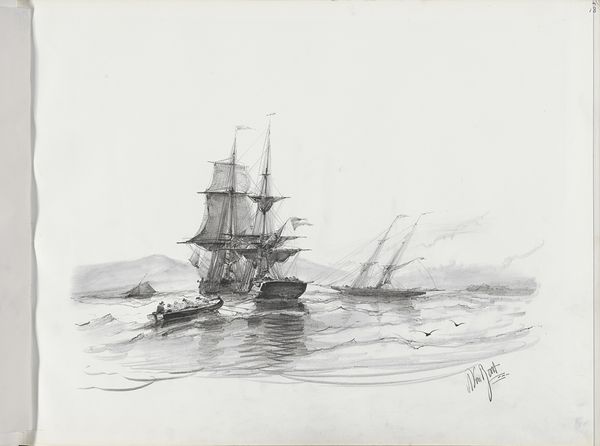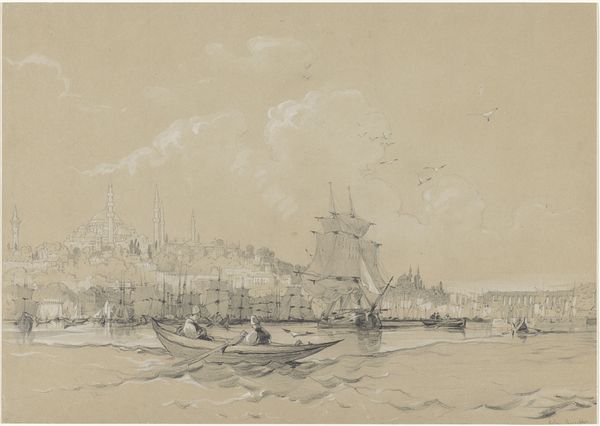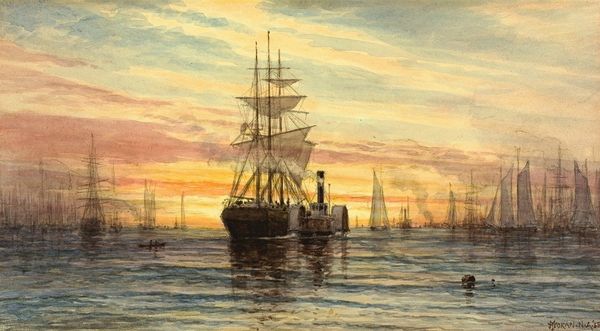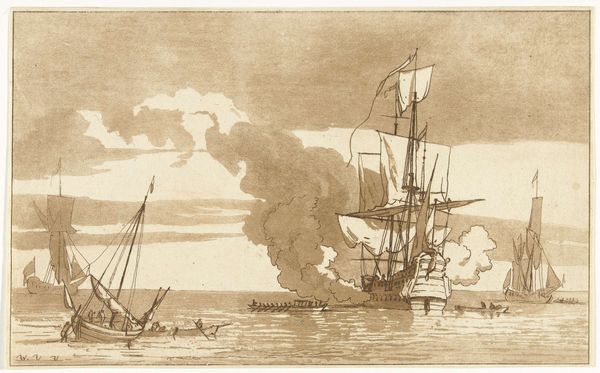
Dimensions: 351 mm (height) x 500 mm (width) (bladmaal), 245 mm (height) x 380 mm (width) (billedmaal)
Curator: Here we have Carl Locher's "Fra Aarhusbugten," created in 1894. What strikes you first about this lithograph? Editor: It's brooding. The composition and muted tones, achieved by applying pencil to create this etching, convey a sense of maritime power looming over a port. The ships dominate the composition. Curator: Locher, trained as a naval officer before turning to art, frequently depicted maritime scenes. Note the emphasis on the industrialized naval fleet, a deliberate focus on tools of military might, products of immense labor. One might even ponder about supply chains involved here. Editor: Absolutely. Beyond the literal depiction, I find the warships themselves hold symbolic weight. They represent Denmark's shifting identity as a naval power at the end of the 19th century, its role in trade and the shadow of conflict. See how they appear almost like colossal, imposing figures dominating the low skyline of Aarhus. Curator: And consider that lithography itself—a reproductive printmaking technique—allowed Locher to disseminate this image widely. It's about making the tools of power visible and perhaps, making viewers consider the power required for war. Editor: Yes, and the symbolism goes deeper. The warships against the softer rendering of clouds—ethereal puffs compared to the dark hulls of the ships—highlights the tension between nature and industry, a conflict prevalent during that period. Notice the tiny boats clustered about the warships like attendant drones; how does that change your thinking about power and hierarchy? Curator: I agree. I wonder, too, about the skilled labor embedded in the construction of these war machines. Also, what about the global flows of raw materials that enabled this particular mode of war-making, the impact of that extraction? Editor: Fascinating to think about. The etching transforms the vessels themselves into complex signs, reminders of historical ambitions and industrial prowess, far removed from their explicit functions of maritime trade and/or destruction. Curator: Thank you. I appreciate how this process-oriented materialist view helps me recognize the societal implications embedded in seemingly simple aesthetics. Editor: Likewise, delving into materials with you helped me unpack complex symbolic meanings that speak to culture and history in more meaningful ways.
Comments
No comments
Be the first to comment and join the conversation on the ultimate creative platform.
